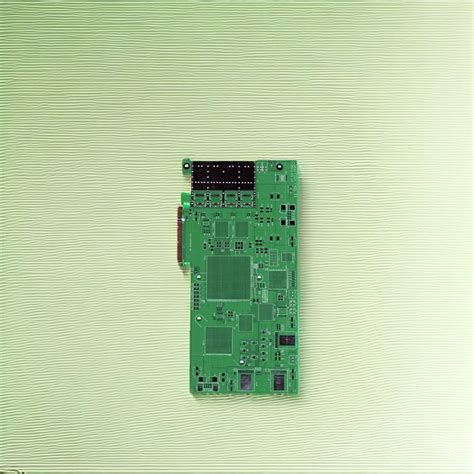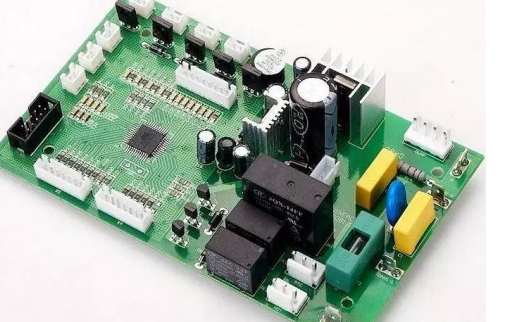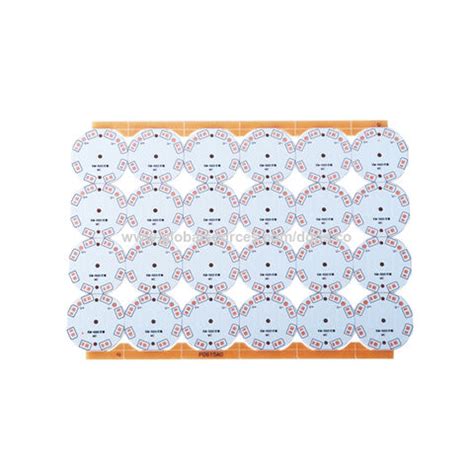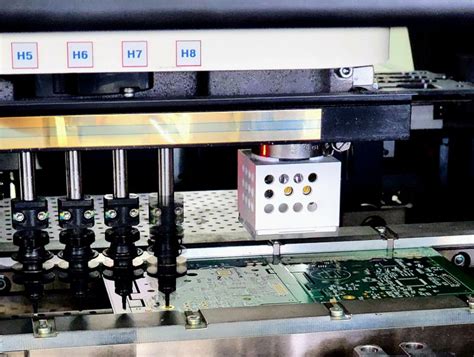Maximizing Efficiency in Custom Circuit Board Assembly Solutions
Key Takeaways
Enhancing efficiency in custom circuit board assembly (pcb assembly) is paramount for optimizing production quality and reducing time-to-market. Several key strategies can be implemented to achieve this goal. First, adopting lean principles can help to minimize waste and streamline workflows in the pcba process. Additionally, incorporating real-time monitoring systems allows manufacturers to track production metrics closely, enabling quick adjustments when bottlenecks occur. Innovative techniques, such as automated pick-and-place systems, not only speed up the assembly process but also improve placement accuracy, which is crucial for maintaining high-quality standards. The implementation of advanced software tools for design and simulation can further enhance productivity by identifying potential issues before physical production begins. Lastly, continuous training for the workforce ensures that team members are well-versed in the best practices related to custom circuit board design and fabrication processes. By utilizing these strategies collectively, manufacturers can significantly boost the efficiency of their pcba operations and remain competitive in today’s fast-paced electronic manufacturing landscape.
Understanding Custom Circuit Board Assembly: An Overview
Custom circuit board assembly (or PCBA) is a critical component in the electronic manufacturing industry. It involves the process of assembling electronic components onto printed circuit boards, which are essential for creating a multitude of electronic devices. Understanding the nuances of this process is vital for manufacturers aiming to improve efficiency and product quality. The assembly begins with design and fabrication, where specifications dictate the layout and component placements—paramount for achieving optimal performance. In conjunction with these elements, it is important to observe how materials and processes influence assembly time and cost. Manufacturers often face challenges such as insufficient labeling or mishandling of components, potentially leading to production delays. To mitigate these issues, employing robust standards and continuous training for assembly line workers can significantly enhance overall productivity. Additionally, the integration of modern technologies, such as automated placement systems, offers promising avenues for reducing errors during the pcb assembly process while meeting stringent quality standards. Ultimately, a strong grasp of custom circuit board assembly will not only streamline production but also align with the evolving demands of an ever-changing technological landscape.
Key Strategies for Enhancing Efficiency in Production
To maximize efficiency in pcb assembly processes, several key strategies can be implemented. First, understanding the specific requirements of pcba projects is essential. This includes selecting the right materials and components, which can significantly impact assembly time and overall quality. Utilizing advanced design software helps streamline the layout process, ensuring that components are easily accessible during the assembly phase. Furthermore, focusing on collaboration between design and manufacturing teams can lead to enhanced communication and reduced errors.
Another crucial strategy is the adoption of effective workflow management techniques. By analyzing the current pcb assembly process, manufacturers can identify bottlenecks and areas for improvement. Implementing lean manufacturing principles can eliminate waste and optimize resource utilization. Additionally, periodic training sessions for staff on new technologies and techniques can ensure that everyone is equipped with up-to-date knowledge, which is vital for maintaining high quality in production.
Lastly, investing in essential tools such as automated pick-and-place machines not only increases speed but also enhances precision in the pcba process. These tools facilitate quick setup changes and minimize human error during assembly tasks. By integrating these strategies into existing systems, manufacturers can ensure a streamlined approach to custom circuit board assembly, leading to improved production efficiency and product quality over time.
Innovative Techniques for Streamlined Assembly Processes
In the realm of pcb assembly, employing innovative techniques can dramatically enhance efficiency and reduce costs. One effective strategy involves the adoption of surface mount technology (SMT), which allows for more compact and efficient layouts, thus minimizing space on the circuit board. By utilizing advanced soldering methods like wave soldering and reflow soldering, manufacturers can ensure superior joint quality, leading to fewer defects during production. Additionally, implementing automated inspection systems is vital in identifying issues early in the assembly process, allowing for corrective measures before mass production.
Another critical aspect is design for manufacturability (DFM), which focuses on simplifying the design process to make assembly easy and cost-effective. This proactive approach ensures that designs not only meet performance standards but are also optimized for efficient pcba practices. Moreover, integrating modular design principles can further enhance flexibility, enabling quick adaptations as market demands shift.
“Tailoring your processes with scalability in mind is key; this approach allows for rapid adjustments in production while maintaining high quality.”
These innovative techniques not only improve production quality but also significantly contribute to time savings and cost reductions. In summary, leveraging these strategies lays a critical foundation for success in custom circuit board assembly.
Essential Tools for Quality Improvement in Circuit Board Manufacturing
To achieve excellence in pcb assembly, a selection of essential tools plays a pivotal role in enhancing quality and accuracy. First and foremost, automated optical inspection (AOI) systems are crucial for identifying defects during the assembly process. These systems use sophisticated imaging technology to detect issues ranging from soldering errors to misaligned components, ensuring that each pcba meets stringent quality standards. Moreover, implementing test equipment such as boundary scan analyzers can significantly enhance fault detection capabilities, allowing manufacturers to troubleshoot designs early in the production phase. Another vital tool is a robust design software that enables engineers to accurately simulate circuit board layouts, ultimately ensuring design integrity before physical production begins. It is equally important to equip assembly lines with advanced pick-and-place machines, which can increase precision and speed in component placement—thus reducing human error. In addition, utilizing an effective soldering station with temperature control features can optimize solder quality and improve the reliability of connections on the circuit boards. Together, these tools not only streamline production processes but also foster an environment where quality is consistently prioritized in each step of the manufacturing pathway, ultimately leading to enhanced durability and functionality of the assembled products.
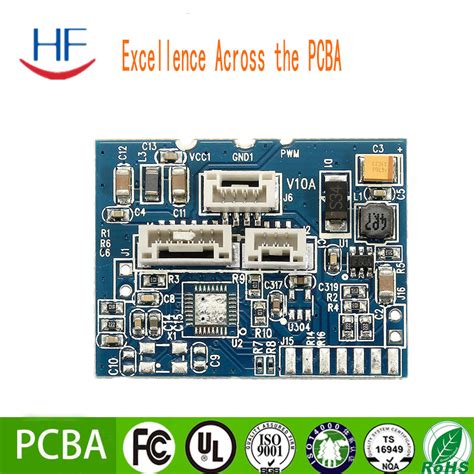
Best Practices in Custom Circuit Board Design and Fabrication
Effective pcb assembly requires meticulous attention to design and fabrication practices to achieve optimal performance and quality. A successful pcba begins with a comprehensive understanding of the electronic components involved, as well as their intended application. Utilizing layer stacking techniques allows designers to optimize the electrical pathways while maintaining a compact form factor. Moreover, adhering to IPC standards ensures consistent quality throughout the manufacturing process.
Incorporating DFM (Design for Manufacturing) principles in the initial stages can mitigate common challenges associated with assembly. This includes simplifying designs to minimize the number of components, thus reducing potential points of failure.
Table 1: Key DFM Considerations
| Design Element | DFM Consideration | Impact on Assembly |
|---|---|---|
| Component Placement | Grouping similar components | Reduces assembly time |
| Pad Sizes | Ensuring correct pad dimensions for soldering | Enhances solder joint reliability |
| Trace Widths | Specifying appropriate trace widths | Prevents overheating issues |
The introduction of simulation software during the design phase can further enhance efficiency by allowing designers to visualize potential issues before production. By anticipating challenges through prototyping, engineers can refine their designs, making subsequent iterations more effective.
Furthermore, investing in high-quality materials and components is essential for diminishing long-term failures and enhancing performance reliability. Selecting advanced substrate materials can also help reduce signal loss and improve overall functionality, ensuring that the pcb assembly meets stringent industry standards.
These best practices not only streamline the design and fabrication process but also contribute significantly to the overall quality of custom circuit board assemblies, reinforcing reliability in electronic manufacturing.
Addressing Common Challenges in Circuit Board Assembly
In the world of pcb assembly, various challenges can arise that may hinder the efficiency and quality of production. One prevalent issue is the occurrence of component misalignment, which can result in significant rework and increased costs. To tackle this, implementing precise design rules during the pcba design phase is crucial. Another challenge is managing soldering defects, which often stem from insufficient training or inappropriate techniques. Utilizing automated soldering machines can dramatically reduce these defects, ensuring consistent quality across multiple units. Additionally, supply chain disruptions can lead to delays in assembly processes; hence, establishing strong relationships with reliable suppliers and adopting just-in-time inventory systems can mitigate this risk. As companies strive for maximum efficiency in custom circuit board assembly, addressing such common challenges becomes essential for optimizing production flow and maintaining high-quality standards in electronic manufacturing.
The Role of Automation in Modern Manufacturing Solutions
In today’s rapidly evolving landscape of electronic manufacturing, automation plays a crucial role in enhancing the efficiency of pcb assembly and pcba processes. By integrating advanced technologies, manufacturers can significantly reduce manual interventions, which often lead to inconsistencies and errors. Automated systems can perform repetitive tasks with high precision, ensuring that the assembly of components onto a circuit board is executed flawlessly. This not only accelerates production rates but also minimizes the potential for defects that may compromise quality. Furthermore, real-time data collection through automated systems allows for better monitoring of each stage in the circuit board assembly process, enabling swift adjustments and enhancements to workflows as needed. The incorporation of robotics and intelligent software further enables manufacturers to streamline their operations, making it easier to adapt to changing demands without sacrificing output quality or efficiency. Consequently, embracing automation in pcb assembly not only fosters greater productivity but also contributes to overall cost-effectiveness in the manufacturing cycle.
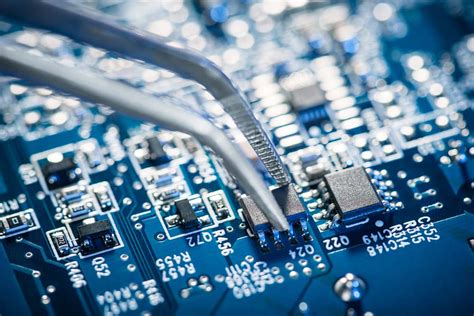
Future Trends in Custom Circuit Board Assembly Technology
As the landscape of custom circuit board assembly (often abbreviated as PCBA) continues to evolve, several key trends are emerging that promise to significantly enhance efficiency and quality in the manufacturing process. One notable trend is the increasing integration of automation and robotics, which allows for faster and more precise assembly processes. Automated systems not only reduce human error but can also increase production speeds, leading to quicker turnaround times for clients. Furthermore, advancements in machine learning and artificial intelligence are beginning to play a crucial role in optimizing assembly lines by predicting potential issues before they arise, thereby minimizing downtime.
Another critical trend is the shift towards more sustainable practices within the PCB assembly industry. Manufacturers are now prioritizing green technologies and eco-friendly materials to meet both regulatory requirements and market demands for sustainability. This shift not only reflects a broader societal change towards environmentally conscious practices but also fosters innovation in circuit design that prioritizes less waste and improved energy efficiency.
In parallel, the adoption of Internet of Things (IoT) technologies is transforming how companies monitor production processes in real-time. This data-driven approach enables manufacturers to gather insights about their operations, leading to informed decision-making that enhances overall productivity. Additionally, this connectivity allows for remote management and troubleshooting of PCBA equipment, further improving operational efficiency.
Overall, these trends point toward a future where custom circuit board assembly not only meets but exceeds current production expectations through enhanced automation, sustainability initiatives, and smart technologies. As these developments unfold, they are likely to shape a more efficient landscape for both manufacturers and their clients alike.
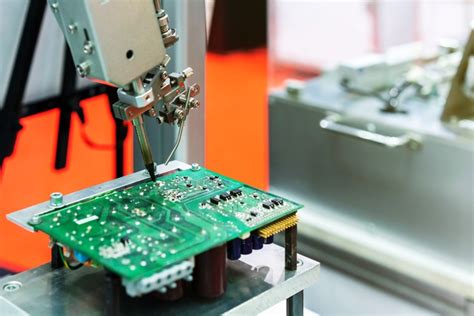
Conclusion
In summary, enhancing efficiency in custom circuit board assembly (PCB assembly) is crucial for maintaining competitiveness in the electronic manufacturing sector. By implementing innovative techniques and utilizing essential tools, manufacturers can significantly improve production quality and reduce lead times. Key strategies, such as optimizing workflows and integrating automation, can transform the PCBA process from a labor-intensive operation to a streamlined and effective system. Moreover, addressing common challenges early on ensures that potential disruptions are minimized. The insights shared throughout this article highlight the importance of ongoing adaptation and the exploration of future trends in technology, which will undoubtedly shape the landscape of custom circuit board assembly in the years to come. By committing to these practices, manufacturers can achieve not only enhanced efficiency but also greater reliability and satisfaction for their customers.

FAQs
What is custom circuit board assembly (PCBA)?
Custom circuit board assembly, often referred to as PCB assembly, involves the process of manufacturing and assembling electronic components onto a printed circuit board. This process is critical in ensuring that electronic devices function properly.
What are the key benefits of improving efficiency in PCB assembly?
Enhancing efficiency in PCBA reduces production time, minimizes waste, and improves overall product quality. Efficient processes lead to cost savings and can help companies meet market demands more effectively.
What innovative techniques can be applied to enhance PCBA efficiency?
Techniques such as surface mount technology (SMT), automated optical inspection (AOI), and advanced soldering methods can significantly enhance the efficiency of pcb assembly. These innovations help streamline processes while ensuring high-quality production.
What essential tools are needed for quality improvement in circuit board manufacturing?
Essential tools include pick-and-place machines, reflow ovens, and testing equipment. Utilizing these tools effectively during the PCB assembly process can lead to significant improvements in quality.
How can companies address common challenges in custom circuit board assembly?
Common challenges include component placement accuracy and thermal management. Companies can address these by investing in advanced technology and employing skilled technicians who are experienced in the intricacies of PCBA.

